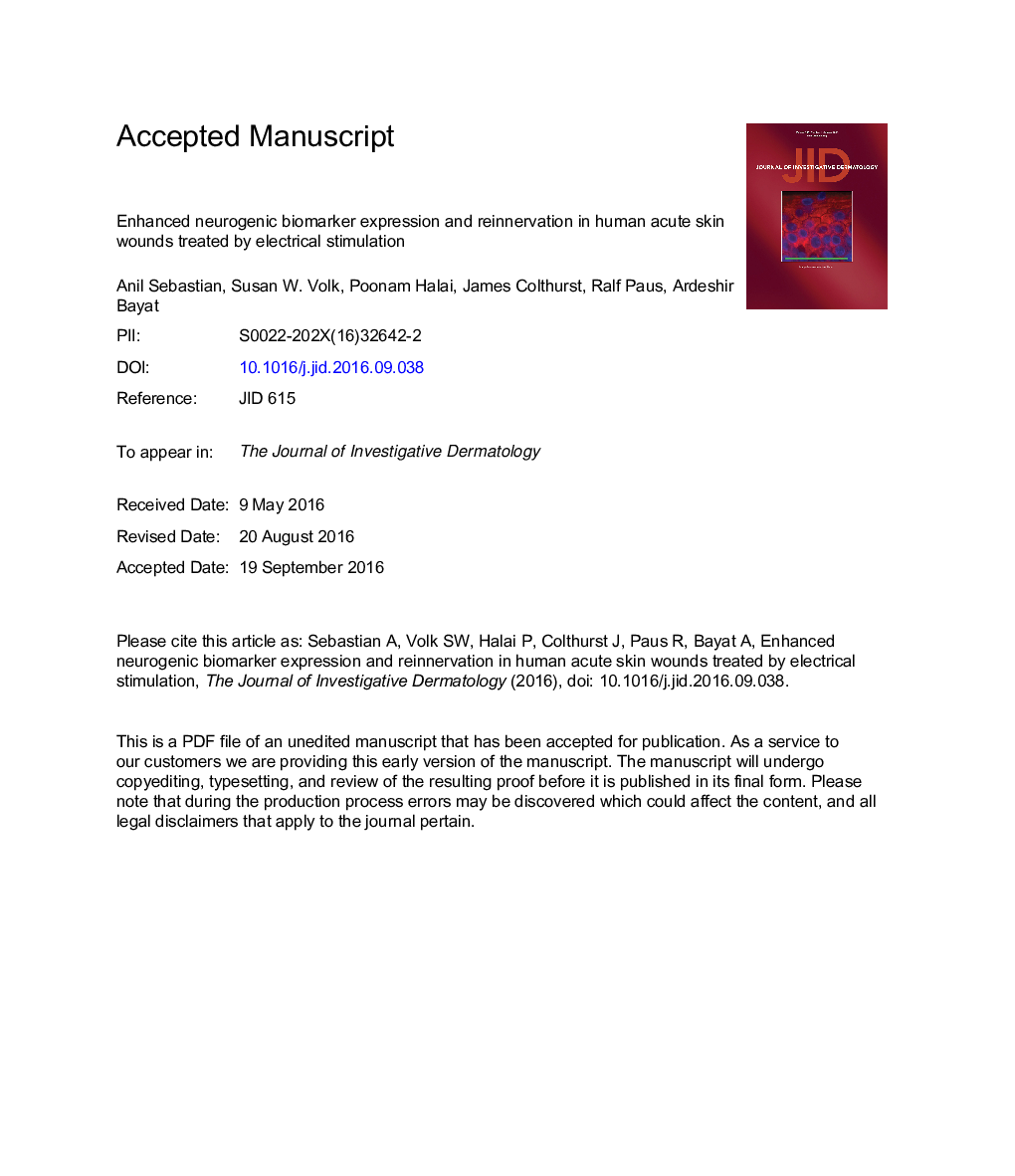| Article ID | Journal | Published Year | Pages | File Type |
|---|---|---|---|---|
| 5649749 | Journal of Investigative Dermatology | 2017 | 37 Pages |
Abstract
Electrical stimulation (ES) is known to promote cutaneous healing; however, its ability to regulate reinnervation remains unclear. First, we show that ES treatment of human acute cutaneous wounds (n = 40) increased reinnervation. Next, to define neurophysiologic mechanisms through which ES affects repair, microarray analysis of wound biopsy samples was performed on days 3, 7, 10, and 14 after wounding. This identified neural differentiation biomarkers TUBB3 (melanocyte development and neuronal marker) and its upstream molecule FIG4 (phosphatidylinositol (3,5)-bisphosphate 5-phosphatase) as significantly up-regulated after ES treatment. To demonstrate a functional ES-TUBB3 axis in cutaneous healing, we showed increased TUBB3+ melanocytes and melanogenesis plus FIG4 and nerve growth factor expression, suggesting higher cellular differentiation. In support of this role of ES to regulate neural crest-derived cell fate and differentiation in vivo, knockdown of FIG4 in neuroblastoma cells resulted in vacuologenesis and cell degeneration, whereas ES treatment after FIG4-small interfering RNA transfection enhanced neural differentiation, survival, and integrity. Further characterization showed increased TUBB3+ and protein gene product 9.5+ Merkel cells during in vivo repair, after ES. We demonstrate that ES contributes to increased expression of neural differentiation biomarkers, reinnervation, and expansion of melanocyte and Merkel cell pool during repair. Targeted ES-assisted acceleration of healing has significant clinical implications.
Keywords
Related Topics
Health Sciences
Medicine and Dentistry
Dermatology
Authors
Anil Sebastian, Susan W. Volk, Poonam Halai, James Colthurst, Ralf Paus, Ardeshir Bayat,
